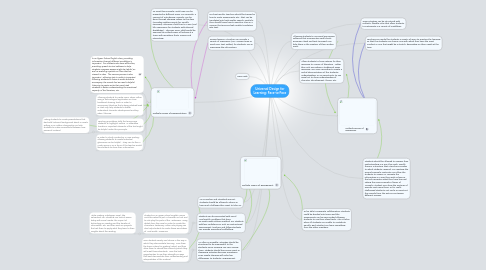Universal Design for Learning: Face-to-Face
by Shannan Senftle


1. To meet this principle, each topic can be presented in different ways. For example, a concept of introducing 'animals' can be done through showing videos to the class (provides auditory inputs for visually impaired), planning a field trip to a zoo (real life experience for students with physical disabilities) . This way every child would be exposed to multiple ways of looking at a topic with repetition that's unique and interesting.
2. Multiple Means of Engagement
3. Multiple Means of Representation
3.1. In an Upper School English class, providing information through different modalities is important. For students who have difficulties, providing speech-to-text software to help students compose essays might be helpful, as well as enabling captions on films that are viewed in class. The reverse process is also important - allowing text to audio is important. Allowing students to listen to audio books to accompany the novels that we read is helpful. Listening to poets recite their work aids students in better understanding the emotional capacity of the literature, etc.
3.2. Allowing students to create comic strips, either using a technological application or more traditional drawing tools, in order to accompany literature that is being studied/read in class may help students to better understand character development and key ideas / themes.
3.3. Teaching annotation skills that encourage students to highlight, outline or otherwise transform important elements of the text might be helpful under this primciple.
3.3.1. Asking students to create presentations that deal with historical background about a novel's setting or an author's biography can help students to make connections between new pieces of material.
3.4. In order to clarify vocabulary in new reading, allowing students to create individual glossaries can be helpful. They can do this in a wiki space or on a forum if the teacher would like students to share their information.
4. For best results, teachers should be trained in how to write assignments, etc., that can be translated into high quality speech; similarly, they should know how to speak in class in a manner that ensures high quality translation into text.
5. During lessons, a teacher can provide a variety of organizers (e.g., concept map or mind map, text outline) for students' use in organizing the information.
6. As curriculum and standards permit, students should be allowed a choice in how much challenge they want to take on.
7. Students can be presented with novel "real world" problems that have no single right solution method. For students with less confidence in such an unstructured environment, teachers and fellow students can provide procedural scaffolding.
7.1. Students in an upper school English course could be asked to put a character on trial and to role play the parts of the "witnesses" using details from the novel in order to create the characters' testimony. Other role playing can also help students to create these simulations of "real world" scenarios.
7.1.1. While reading a distopian novel, like Fahrenheit 451, students can look at issues today with social media, the impact of technology on reading and the transfer of information, etc. and then work on projects that ask them to apply what they learn to their insights about the reading.
